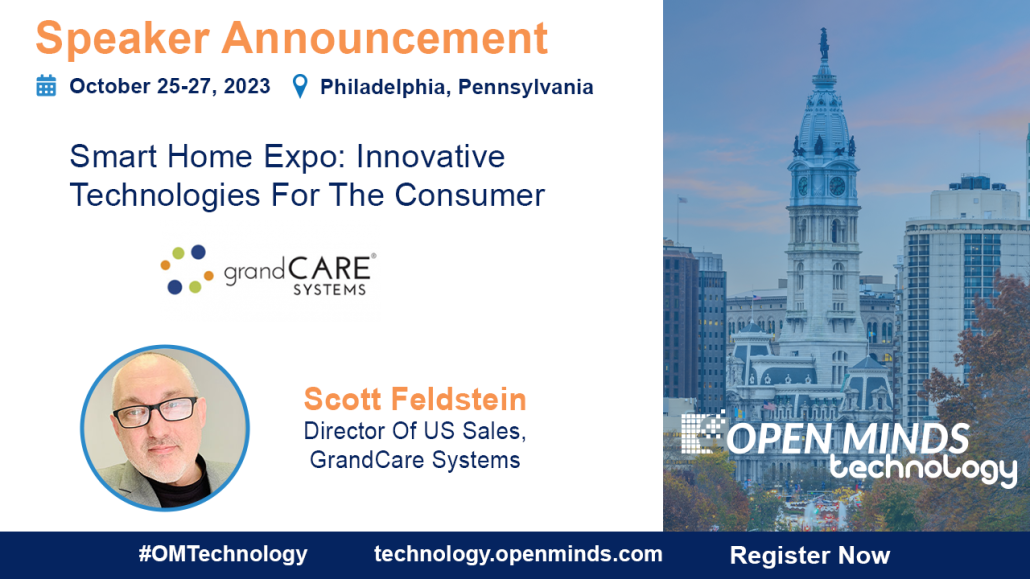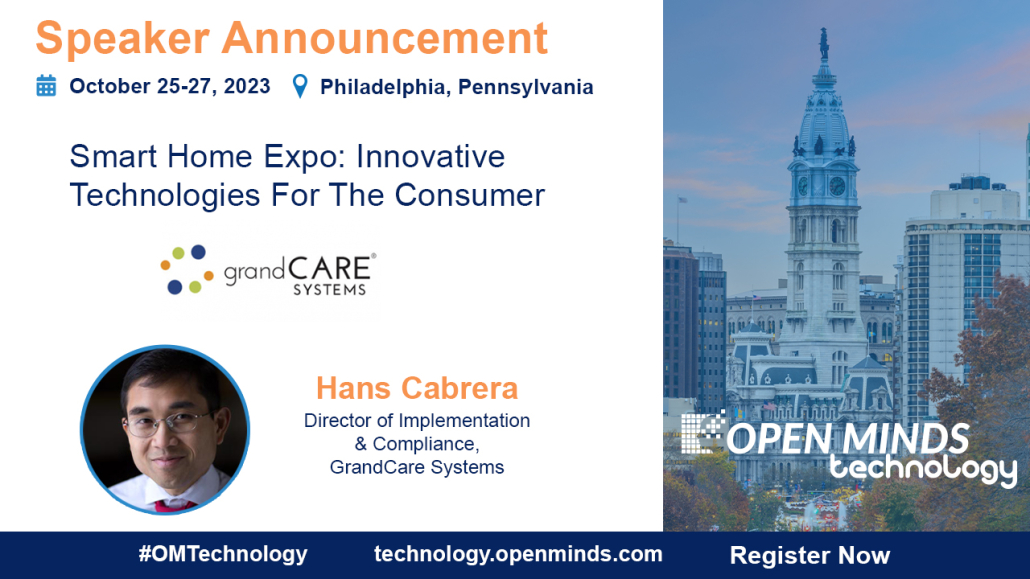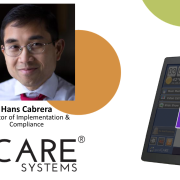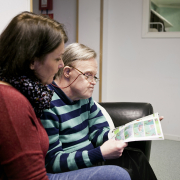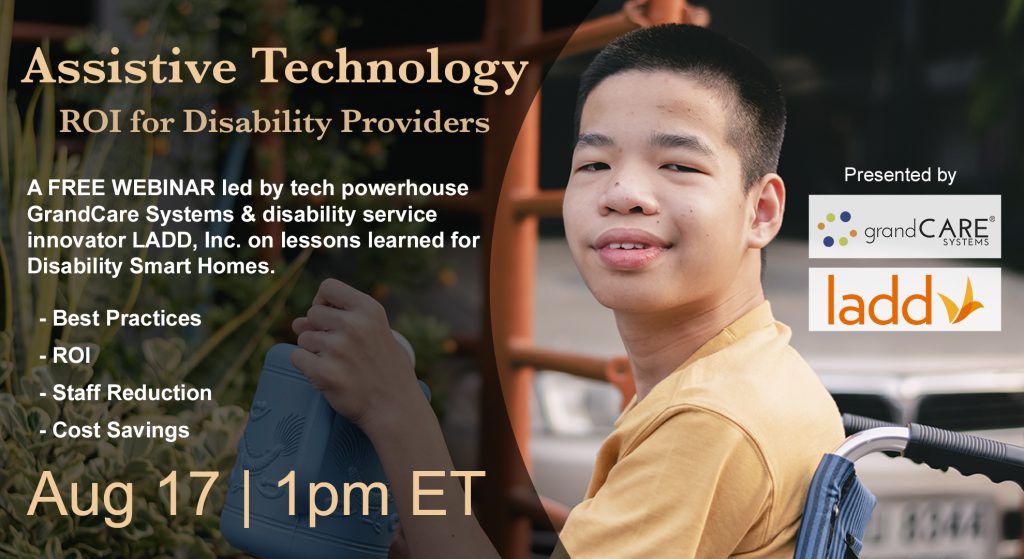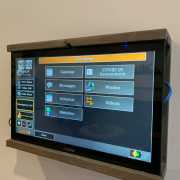GrandCare Technology for Disabilities Leads to Increased Independence, 50% Reduction in Costs
A blockbuster new study from Xavier University’s Department of Occupational Therapy showed that remote patient monitoring & telehealth technologies including the flagship platform, GrandCare Systems, increased client independence, reduced in-person caregiving hours, and cut the staffing costs dramatically.
LADD, a Cincinnati-area non-profit that supports people with intellectual and developmental disabilities (IDD), built a newly constructed “smart home” outfitted with several enabling monitoring and security technologies. In the fall of 2020, four young men moved into the new residence. None of them had ever lived independently, especially without overnight supervision.
Each person has a personal GrandCare touchscreen System for reminders, daily schedule, personal health readings and to video connect with family and staff. Additional motion and activity monitoring sensors can alert remote staff if additional help is needed. Smart appliances, relaxation stations and voice technology are also included in the smart home.
Researchers at Xavier set out to measure “occupational performance” (the ability to do everyday tasks without help), resident satisfaction, and the cost of care in the new smart home setting. The results were remarkable.
One of the metrics used in the study was success in Activities of Daily Living (ADLs) and Instrumental Activities of Daily Living (IADLs). These include tasks such as: bathing, dressing, and eating, but also financial management, shopping and meal preparation. The technologies “allowed for residents to perform more of their ADLs and IADLs successfully, with less supervision.” Not only that, but technology-assisted care brought “increases in participants’ self-ratings of performance and satisfaction.”
The men in the smart home were able to do more things independently, for themselves, which led to higher feelings of self worth and satisfaction.
75% Reduction in caregiving hours
The study also found that LADD was able to safely reduce direct caregiving hours by an astonishing 75%. This had a profound impact on the cost of care. Prior to GrandCare and remote monitoring technologies, the cost of supporting these individuals was $5,260 per week.
Annual cost savings of $137,941
Supportive technologies slashed the cost by almost 50% to only $2,607 per week. This represents a cost savings of more than 50%, or $2,653 per week. That’s $137,941 per year. LADD was able to pay off all of the smart home technology in less than a year, in 36.7 weeks.
The study also found that LADD was able to safely reduce direct caregiving hours by an astonishing 75%. This had a profound impact on the cost of care. Prior to GrandCare and remote monitoring technologies, the cost of supporting these individuals was $5,260 per week. Supportive technologies slashed the support costs by over 50% to only $2,607 per week. This represents a cost savings of $2,653 per week. That’s $137,941 per year. LADD was able to recoup the cost of all smart home technology in less than a year– just 36.7 weeks.
Read the Full Xavier Study Here
Assistive Technology ROI for Disability Providers
Would you like to increase independence among the people you support? Would you like to do it while safely reducing in-person support hours? How about cutting costs in half? You can do all of these things.
We at GrandCare Systems and LADD, Inc., the technology and support organizations behind the 2020 smart home project in Cincinnati, are offering a free webinar August 17 at 1pm to share what we’ve learned. Not only that, but we will be sharing the findings of a two year study on the project by researchers at Xavier University.
We will cover:
• Best Practices
• ROI
• Staff Reduction
• Cost Savings
Free Zoom Webinar
August 17, 1:00pm ET (12:00pm CT)
Register at https://us06web.zoom.us/webinar/register/WN_NrUHRoeARTuNDm2NpvRi2w
More about GrandCare
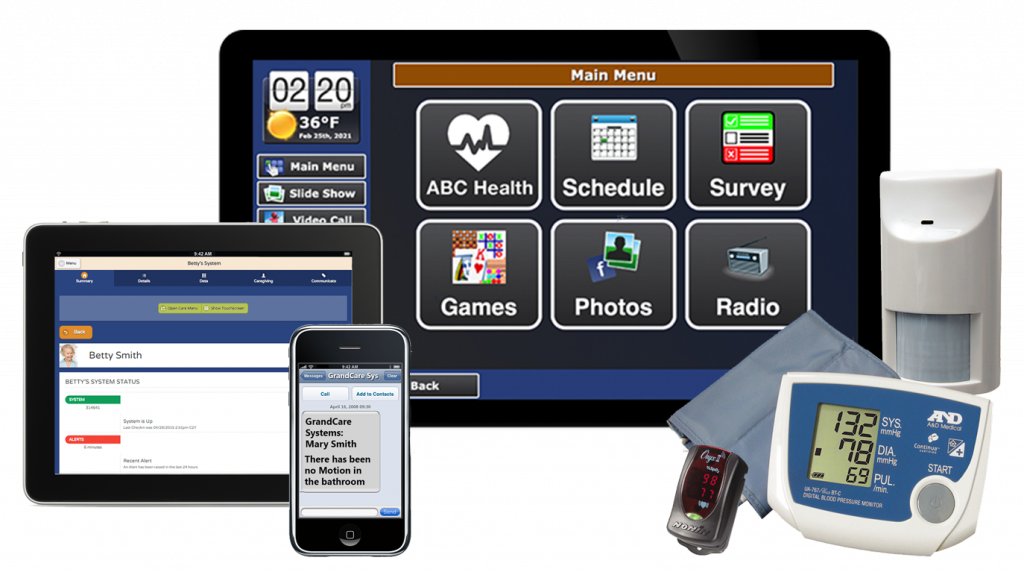
GrandCare is a large intuitive and personalized touchscreen that provides residence-wide cognitive assists, tasks, and schedules. GrandCare also enables easy access to remote support with one touch video calls. It integrates with a wide range of remote activity monitoring sensors and telehealth devices that can alert designated caregivers if support is needed. It’s great for single occupant residences and for homes with multiple supported people. Providing support through GrandCare can enable greater independence for those already in community supported living, and it can often graduate individuals to a new level of independence.
If you would like to explore adopting GrandCare in your disability or aging services support organization please reach out to us at sales@grandcare.com or (262) 337-6147.
